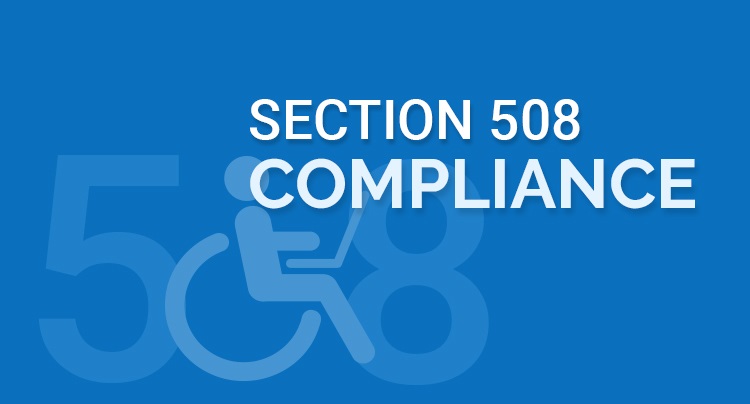For those of us without a law degree, a great deal of legal information can be difficult to understand. More and more, digital trends emphasize the need for accessibility, but there are legal requirements to be met as well, governed by Section 508 compliance. One must familiarize themselves with the tools and support necessary in order to be compliant with these regulations.
The General Services Administration of the federal government provides a list of requirements necessary to comply with Section 508 of the Workforce Rehabilitation Act. These apply to all federal agencies, including public schools and some places of higher education. The specifications are broken up into provisions for technical standards, software applications, web-based apps, telecommunications, multimedia, and hardware. The law also addresses access to product documentation and end-user support. Federal website such as United States Access Board and Section508.gov maintain checklist and other references to help developers and others ensure the accessibility of all digital content. In addition, many companies provide templates such as the Voluntary Product Accessiblity Template (VPAT) to help assess digital accessibility.
The templates, checklists, and requirements within Section 508 all have a few things in common regardless of the specific topic. Websites and software, for example, must be usable by adaptive technology such as screen readers, be clearly understandable, easy to navigate even for those with motor challenges, and functional for those with multiple impairments. Since Section 508 was only a set of rules to adhere to for minimal accessibility, it is difficult for content creators to agree on universal best practices for fulfilling said requirements. However, federal law recently incorporated a set of guidelines for accessibility that are being adopted worldwide.
The basic elements of Section 508 to take away are (1) that it applies to all government agencies and federal sectors, (2) that it encompasses all types of mediated technology, including mobile, web, software, and hardware, and (3) that it requires that assistive technology provide a user a comparable experience to that which a non-disabled person would receive.
High levels of accessibility are achievable and compliance is attainable even without knowing the minutia of Section 508 rules. Guidelines are available to assist in efforts to meet accessibility needs, both from the federal government itself and from many reputable companies. By taking advantage of these resources, being Section 508 compliant is easily accomplished.







